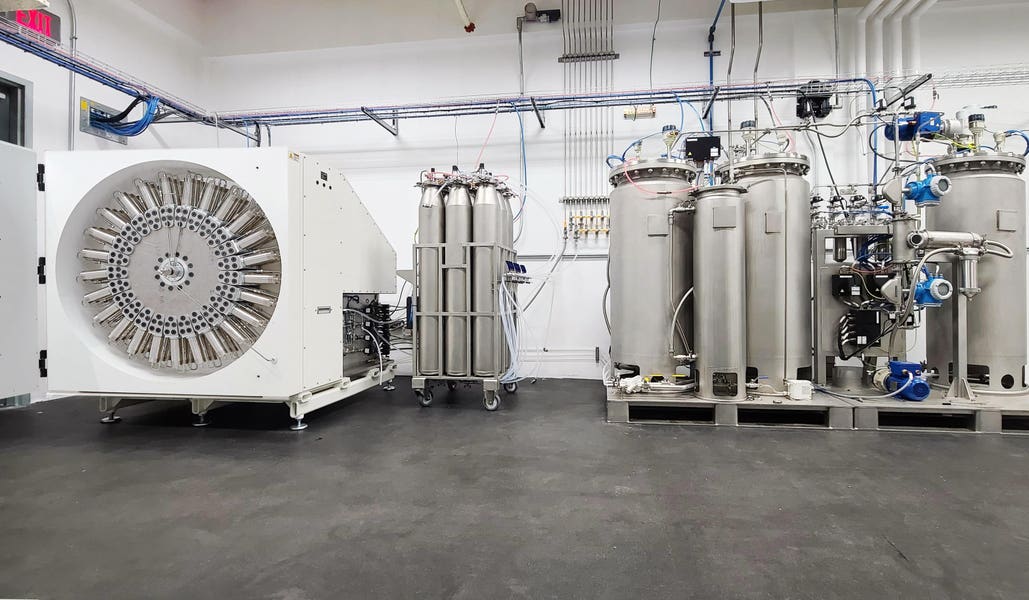[[{“value”:”
While traditional methods for refining and isolating hemp-derived cannabinoids typically involve a chemical catalyst, a new method has emerged in recent months. Hemp laws are constantly in a state of flux as some state regulators seek to restrict the use of conversion reactions, but this system introduces a novel solution.
Utah-based Red Mesa Science & Refining unveiled its botanical refinement system, allowing cannabinoids to retain their natural complexity and integrity. How’s this possible? The company’s novel method works by extracting and distilling cannabinoids from American-grown hemp and introducing the material to an industrial-scale liquid centrifugal partition chromatography system. This allows them to precisely isolate the target cannabinoid.
Red Mesa is a large-scale producer of hemp-derived CBD, CBG, CBN, CBT, and other cannabinoid isolates and distillate. The team operates a 50,000-square-foot facility in St. George, Utah with various homogenization, distillation, crystallization, liquid chromatography, and conversion processes. Crude materials go from extractors to refiners, and finally to wholesale customers, typically connected via third parties.
Transforming Hemp Refining Processes
While the company employs traditional hemp refinement methods, Red Mesa’s new proprietary manufacturing process isolates rare cannabinoids such as CBN, CBT, and CBL—without chemically catalyzed conversions.
“Unique to Red Mesa is the installation of the world’s largest centrifugal partition chromatography (CPC) equipment system,” Red Mesa President Jeff Applegate says in a video call, explaining the system they purchased from RotaChrom Technologies. “It was a leap of faith in future technology to be applied to the refining of cannabinoids. It’s a massive undertaking from a technology standpoint to get the system and the methods for processing underway, and to truly utilize all of the cannabinoids that come from the plant.”
It’s a liquid separation method that doesn’t rely on chemical catalysts or solid medium— fundamentally different from flash chromatography or column chromatography methods. “This technique uses two immiscible liquid phases and a centrifugal force to isolate cannabinoids based on their solubility difference,” he says. “It’s highly selective, gentle, undelicate compound, and avoids contamination risk associated with those traditional methods of separation. The CPC allows us to refine rare cannabinoids like botanical CBN, CBL, and CBT and get exactly what we want. The perfect fraction is today a reality.”
He explained that in the hemp business, you have two main cannabinoids: CBD and CBG. But there is additionally a host of minor cannabinoids. Red Mesa processes crude hemp oil, removing unwanted ingredients via the homogenization process before several more steps.
Applegate formerly served as Chief Operating Officer of a medical rehabilitation product manufacturer, with extensive experience in sales management, manufacturing, and product development in an FDA-regulated industry. Under his leadership, Red Mesa has become a leader in the cannabinoid space, specializing in CBD, CBG, and CBN isolates, distillates, crystal-resistant distillates, and botanically-derived rare cannabinoids. The company sells raw cannabinoid material to product formulators, contract manufacturers, and white labelers. In regards to where the markets the company’s ingredients end up, the hemp nutraceutical and wellness sector is number one.
“There’s probably not another state with more nutraceutical and wellness horsepower than Utah,” he says. “Hemp is a market that’s increasingly looking for more credible producers at scale with the certifications and registrations that Red Mesa holds. And then there’s also the vape industry. In the there’s a growing appetite for non-psychoactive options outside of nicotine or THC.”
Isolating Hemp-Derived Cannabinoids Safely
There’s a increasing demand for cannabinoid isolates with greater purity levels. For instance, importing CBD to be sold in Japan is legal, but CBD products must contain less than 10 ppm THC—0.001%—which is the strictest zero tolerance CBD rule yet. In addition, certain athletes must comply with strict anti-doping rules when taking CBD, such as Olympians.
The company’s CBD isolates, for instance, contain ≥99% CBD purity or greater and THC-free. Every raw ingredient sold by Red Mesa is produced in-house and traceable, with third-party lab COAs verifying cannabinoid potency, under full compliance.
State to state, hemp laws are constantly changing, often when it involves typical conversion methods. In Montana for instance, the state’s regulatory agency now bans the use of a converted CBN as an input material to make finished CBN good products, and Applegate explained that solutions like theirs may become fundamental to the continuation of many businesses that sell those products, allowing them to circumvent those rules.
Hemp in Utah is regulated under both federal and state agencies, primarily the The United States Department of Agriculture (USDA) and the Utah Department of Agriculture and Food (UDAF). All cannabinoid products marketed or sold in Utah are required to register with the UDAF.
Hemp-derived cannabinoid product sales reached $28 billion in 2022 while legal cannabis products generated $26 billion in sales during that same period, according to Whitney Economics.
Red Mesa brings in about 6,000 kilograms of crude feedstock inputs per month, and the company aims for about 12,000 kilograms of feedstock input by the middle of 2026. The company’s large-scale B2B business model showcases the true power of the hemp industry, and where cannabinoid refinement methods are headed in the future.
“}]] While traditional methods for refining and isolating hemp-derived cannabinoids typically involve a chemical catalyst, a new method has emerged in recent months. Read More


